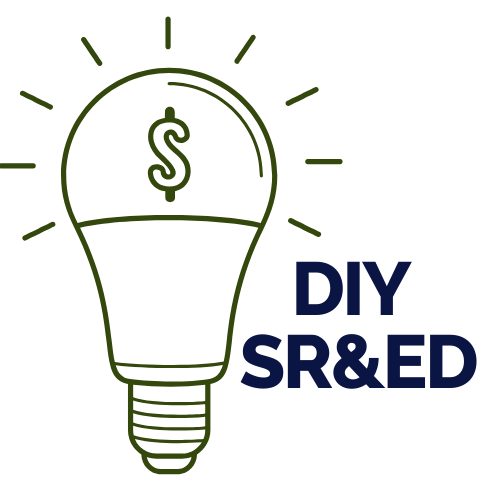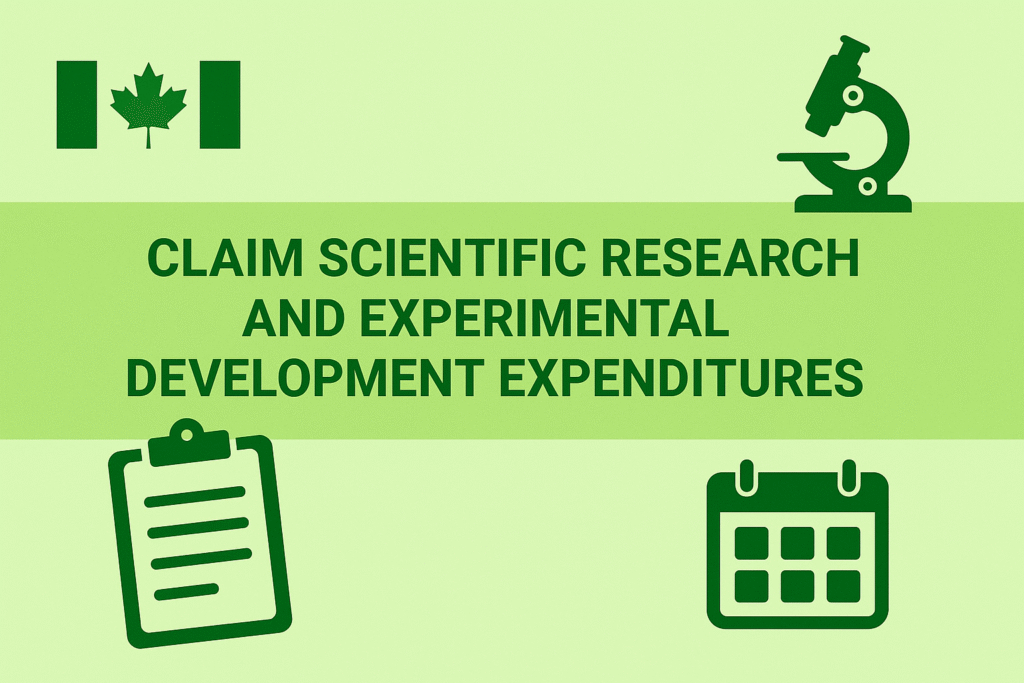Thinking about filing a shred tax credit claim but not sure what you can include—or how much you’ll actually get back? You’re not alone. Many startups miss out on thousands of dollars because they don’t claim all their eligible expenses or understand how refund calculation works.
This startup-friendly guide breaks it down: what qualifies, how to estimate your refund, and how grants affect your claim. No fluff. No consultants needed.
1. What Costs Are Eligible for SR&ED?
Not every expense qualifies for SR&ED tax credit, but if it directly supports your R&D, it probably counts.
A. Salaries & Wages (The Big One)
- Developers, engineers, scientists, technicians working on R&D
- R&D-related supervisors and support staff
- Founders and shareholders, based on their time spent
📌 Note: Admin roles or non-R&D time aren’t eligible. Keep solid time-tracking (timesheets, logs, etc.).
💡 Example: An engineer spending 70% of their time on machine learning experiments = 70% of their salary is claimable.
B. Subcontractors & Consultants (80% Rule)
- Must be Canadian-based and doing R&D work
- Only 80% of the cost is claimable (CRA assumes there’s a profit margin)
Example: You pay a Canadian firm $100,000 for eligible R&D. You can claim $80,000.
C. Materials Consumed or Transformed
- Materials used in testing and experiments (e.g., chemicals, electronics, prototype components).
- Materials consumed (completely used up) are fully claimable.
- Materials transformed (repurposed into something else during the process of SR&ED)
Example: $50,000 in lab chemicals for biotech R&D? Fully claimable.
D. Third-Party Payments (Universities, Institutes, etc.)
Payments made to approved organizations for SR&ED including Universities, colleges, research institutes, and Industry associations
- The SR&ED must be performed in Canada.
- The research must be related to your business.
- You must have the right to use the results of the R&D work.
- Limited 80% of claimed costs (in some provinces you can claim for the extra 20%)
Example: You pay UofT $100K for cleantech R&D. You claim $80K federally + $20K in Ontario via Ontario Business Research Institute Tax Credit (OBRITC).
E. Overhead & Indirect Costs (Two Methods)
1. Proxy Method (Most Common, Simplified Approach)
- Add 55% of eligible salaries instead of tracking rent, power, etc.
- Simpler, especially for lean teams
- Note: For founder/shareholder salaries and wages, a 75% adjustment is applied to calculate the overhead amount under the proxy method.
2. Traditional Method (More Detailed, Less Common)
- Track actual overhead (rent, insurance, utilities)
- Only worth it if indirect costs are very high
Most startups use the proxy method to simplify and maximize their shred tax credit claim.
F. SHRED Capital Expenses (No Longer Eligible)
- Equipment and buildings aren’t claimable since 2013
- But materials used in testing still qualify
💡 Example: Buying a 3D printer? Not eligible. Using its filament for experimental prototyping? That’s claimable.
2. How to Estimate Your Shred Tax Credit Refund (Fast Formula)
Here’s a quick startup-friendly calculator method:
Step I: Identify Your SR&ED Expenditures
- Salaries & Wages (R&D time only).
- Subcontractors (80% rule).
- Third-parties (80% rule)
- Materials Used in Experiments (100%).
- Overhead Costs (add 55% of salaries if using proxy method).
Step II: Apply the Federal Shred Tax Credit
- CCPCs (Canadian Small Businesses) → 35% refundable tax credit (on the first $3M in expenditures).
- Non-CCPCs (Large/Public Companies) → 15% non-refundable tax credit.
Step III: Add Provincial Credits (If Applicable)
You can find the percentage of provincial tax credits here.
Example Refund Calculation
A Registered company in Ontario with $100,000 in eligible SR&ED expenses could receive:
- Federal SR&ED Credit → $48,000
- Ontario SR&ED Credit (refundable) → $12,000
- Ontario SR&ED Credit (non-refundable) → $5,000
- Total SR&ED Credit → $65,000
💡 Pro Tip: You can estimate your refund using DIY SR&ED calculator (coming soon).
3. SR&ED and Other Government Grants: Can You Stack Them?
Many businesses receive government grants (like IRAP, MITACS, or provincial R&D grants), but how do these affect SR&ED claims?
How Funding Affects Your SR&ED Claim
- Government grants & subsidies reduce eligible SR&ED expenses → If a grant pays for part of your project, you can only claim the portion you funded yourselves.
- Private investment and loans do NOT affect SR&ED.
Example: Funding Adjustment
- Total SR&ED Expenses = $500,000
- Received an IRAP Grant = $100,000
- Adjusted SR&ED Claim = $400,000 (because IRAP is government-funded).
💡 Rule of Thumb: If you receive government funding, expect a reduction in SR&ED claimable expenses.
4. Refundable vs. Non-Refundable R&D Credits
SR&ED tax credits can be refundable or non-refundable, depending on your business type and location.
Refundable Credits (CCPCs – Cash Back!)
Canadian-Controlled Private Corporations (CCPCs) can receive refundable SR&ED tax credits, meaning you get cash back, even if your company has no taxable income.
Non-Refundable Credits (Tax Reduction Only)
There are two types of non-refundable credits:
For Non-CCPCs (Larger/Public/Foreign-Owned Corporations):
- SR&ED tax credits are non-refundable, meaning they can only be used to reduce taxes owed—not claimed as a cash refund.
For CCPCs (Provincial Tax Credits):
- Some provincial R&D tax credits offer a mix of refundable and non-refundable credits.
- Refundable credits = Cash back.
- Non-refundable credits = Can only be applied against taxes owed.
Example: A CCPC in Ontario may receive both refundable SR&ED credits at the federal level and a mix of refundable and non-refundable provincial R&D tax credits, depending on the program.
Final Thoughts: Get the Maximum SR&ED Refund
- Understanding eligible costs is key to maximizing your claim.
- Use our estimation formula to get a rough idea of your refund (coming soon).
- Government funding can impact your claim—plan accordingly.
Next Up:
👉 How to Maximize Your SR&ED Claim In our next blog post, we’ll cover specific strategies to get the largest possible SR&ED refund—from documentation best practices to smart claim structuring.




